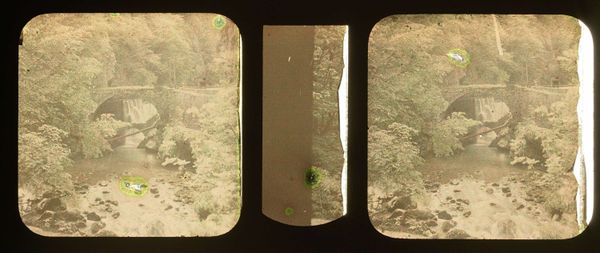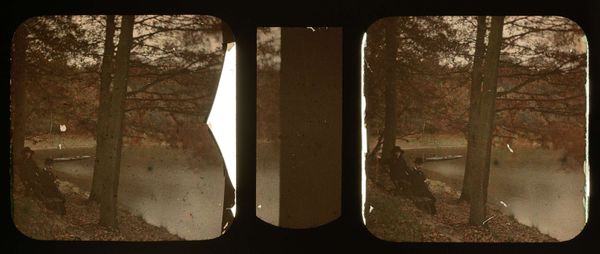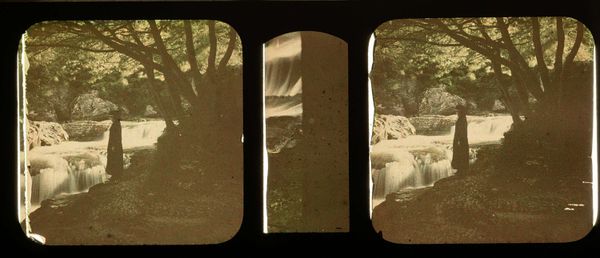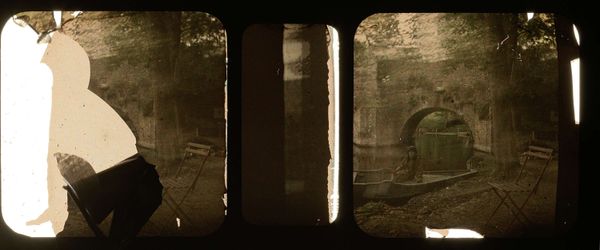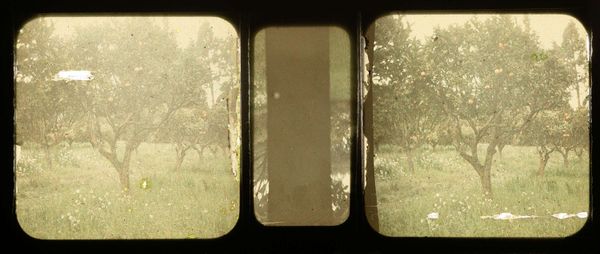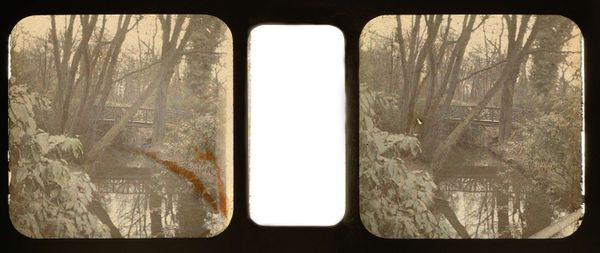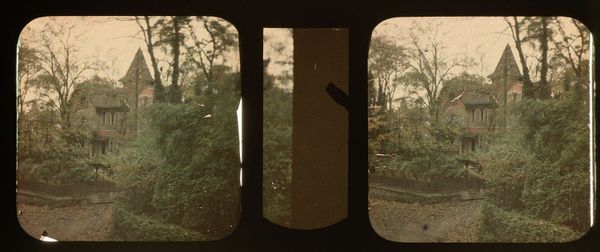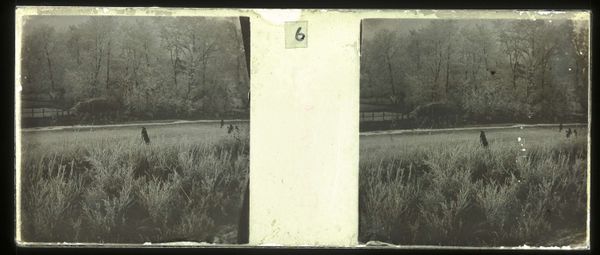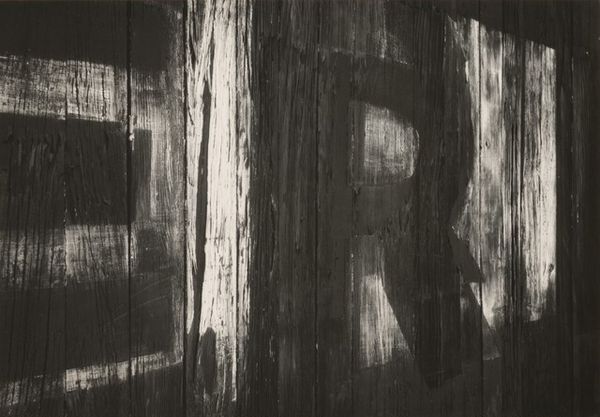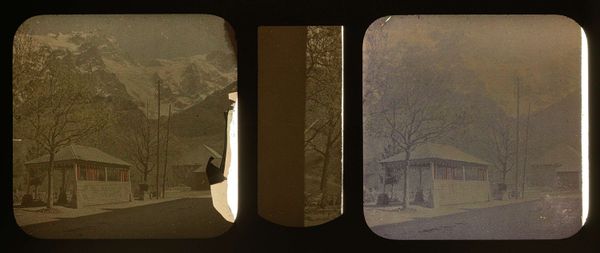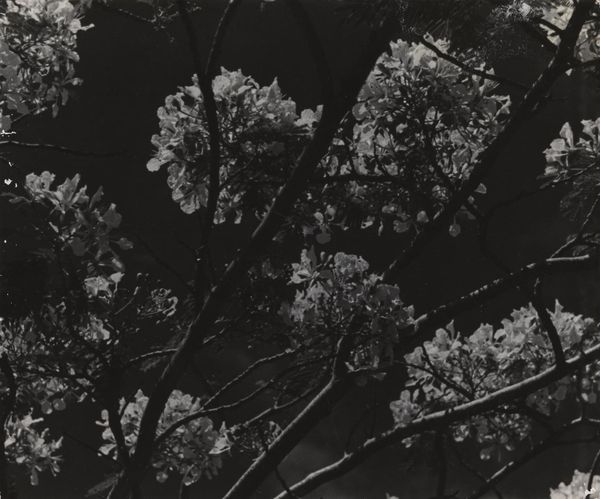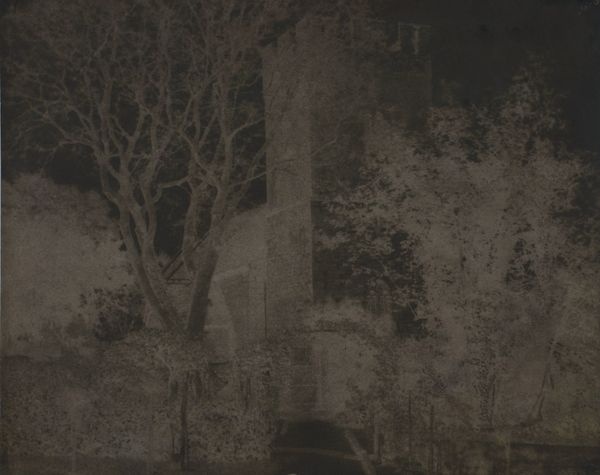
Dimensions: height 75 mm, width 150 mm
Copyright: Rijks Museum: Open Domain
Editor: Here we have "Bridge in a Park" by Adolphe Burdet, dating from between 1907 and 1935. It's a gelatin-silver print, and the triple-panel format is a bit unusual. There's a wistful quality to the light filtering through the trees... How do you read this piece? Curator: I'm struck by how the pastoral scene invites us to consider notions of leisure and privilege during that period. This isn’t just any park; it's a constructed space reflecting particular social and class dynamics. Look at how the bridge implies a directed path, almost a curated experience of nature. Editor: Curated nature… That makes sense. It's not a wild, untamed landscape. It's very controlled. Curator: Exactly. Who has access to this kind of idealized nature? And what does that access say about power structures at the time? Photography itself was becoming more accessible, but still retained a certain aura of exclusivity. Is Burdet reinforcing those social boundaries, or perhaps subtly questioning them by capturing it? What do you think? Editor: That's a really interesting question. Maybe he's documenting a reality without necessarily endorsing it? Curator: Precisely! And notice the Impressionistic style – a conscious choice to present a subjective interpretation of this "natural" space. It obscures the sharp lines, almost romanticizing the setting. The park itself becomes a kind of stage for social performances, doesn't it? Editor: Yes, almost theatrical. I never thought of it that way before! Thanks! Curator: Of course! By understanding its historical context, we realize this seemingly innocent image speaks volumes about society, class, and the very definition of "nature" during Burdet’s time. Editor: Definitely. I’ll never look at a park the same way again.
Comments
No comments
Be the first to comment and join the conversation on the ultimate creative platform.
